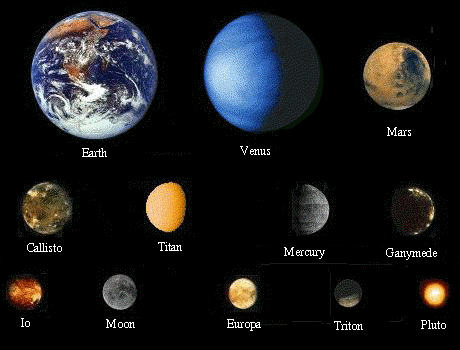
The cosmos is a overlapping parallel dimension, which means it never ends. When you look into space all you see are stars and you think that “well that’s a lot”, maybe even a “wow”… but space has so many numbers that we can`t even count to. When you look outside at nighttime try to find the darkest part between the stars, about the size of your fist and try to guess how many solar systems are there. Most people would say a thousand, maybe less, but scientifically there are more than one billion solar systems. Just imagine how many there would be in a group of stars.
Our solar system is a star and everything around it. Our star (the sun) is the center of our solar system and with us, Earth in the middle of it. The Sun, Mercury, Venus, Earth, Mars and then the asteroid belt, Jupiter, Saturn, Uranus, Neptune then little Pluto (the dwarf planet).
Tens of billions of planets in our vast Milky Way with some more than one star in a solar systems. Just to give you the names a Binary system (two stars) and then the multi-star systems (three or more).
The outer spiral arm of the Milky Way consists of our star that orbits the eight planet and natural satellites and also our moon, and not to forget the dwarf planets and their satellites and other asteroids/comets.
Our solar system consists more than just eight planets that orbit the sun… Kuiper Belt (Kui·per belt) Kuiper Belt also known as ‘Edgeworth-Kuiper belt’ is a circumstellar disc that expands beyond our planets extending the orbit of Neptune to about 50 AU (astronomical units) from the sun. Similar to the asteroid belt but far larger, 20 times as wide and 20 to 200 times as massive!
Way before our time there was a lot happening in outer space. There was ice, liquid and there was gas which settled in the outer regions of our solar system. They combined, then made our gas giants, Jupiter, Saturn and also including the ice giants Uranus and Neptune.
In the 17th century Galileo Galilei’s discovery invented the telescope which was very important for seeing our solar system and found out that the planets swarm around the sun. at his time it was called the ‘Copernican Heliocentric Theory.’ It was revolutionary!
Lets go back 4.5 billion years ago… the sun was made of interstellar gas/dust that had collapsed due to a shockwave of a nearby exploding star called a supernova and a super nebula and some spinning/swirling disk of material. Gravity pulled more than metal in. Hydrogen atoms began to form helium that made a tremendous amount of energy, then… BOOM! The sun was born and massed more than 99 percent of available matter! More matter clumped together forming larger and larger objects, some grew big enough for their own gravity to form them into spheres, planets, dwarf planets and large moons. Sadly not all could form into planets. The asteroid belt is made up of bits and pieces of the early solar system that couldn’t form a planet. Others became asteroids, comets, and meteoroids and small/irregular moons.
The arrangements of our solar system is due the way that the solar system is formed. Planets closest to the sun are only rock material so it can withstand the suns heat when the solar system was young. Therefore the first four planets Mercury, Venus, Earth, and Mars are a terrestrial planet.
Since 1957 we have launched thousands of spacecraft`s (robotic emissaries) they also follow in their predecessor with our long-lived desire to understand the Cosmos. There is a spacecraft on Venus, Mars and as well Saturn, also including a comet and an asteroid. The Voyager spacecraft hurling out of our solar system at a very high speed is now heading to Kuiper Belt after its meeting with Pluto.
Planets come in all shapes and sizes and colours, just like humans. Jupiter and ringed Saturn and cold Uranus and Neptune are gas planets, containing a huge percent of our solar system, some can be twice maybe even triple the size if Earth. Gas giants are huge worlds of air, clouds of fluid which usually have no solid surface. The others however are rock, ice and dust. The rock balls of our solar system (Mercury, Venus, Earth and Mars also including our moon), Earth is considered the biggest rock planet.
The planets are not the only planets in our solar system, if that makes sense. All but two of the planets are orbited by moons, each a world onto themselves. Big moons surplus the smallest planets, sixteen or seventeen would coalify as dwarf planets if they orbit the sun.
More than 100 Kuiper Belt dwarf planets, only one among the asteroids… Ceres.
Six solid worlds Venus, Earth, Mars, Titan, Triton and Pluto are capable to have their own atmospheres dense enough to have their own weather. Eris likely does when its near its perihelion. We have witnessed active geology on four worlds Earth, Lo, Enceladus and Titan. Most stars host their own planets so there are likely tens of billions of them.






this is just one example of a Suepernova

This is the Voyager 1

Jupiter compaired to Earth




